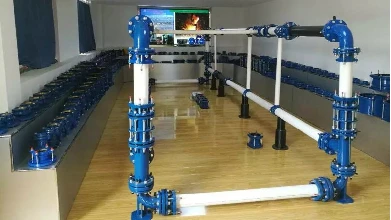300mm butterfly valve specifications and features for optimal performance and efficiency
Understanding 300mm Butterfly Valves Features, Applications, and Benefits
A butterfly valve is a type of quarter-turn valve that utilizes a flat, circular disc to regulate the flow of fluid in a pipeline. Butterfly valves are widely used in various industries due to their compact design, ease of operation, and efficient flow control. In this article, we will explore the significance of a 300mm butterfly valve, its features, applications, and the benefits it offers to industries relying on fluid management.
What is a 300mm Butterfly Valve?
The term 300mm refers to the diameter of the valve, indicating that it is designed to be installed in a pipeline with a nominal size of 300 millimeters. This size is commonly used in various applications, from water treatment facilities to HVAC systems. Butterfly valves are particularly appreciated in larger pipe systems due to their ability to handle substantial flow rates while minimizing pressure drop.
Key Features of 300mm Butterfly Valves
1. Simple Design The butterfly valve features a straightforward design with fewer moving parts compared to other types of valves, such as gate or globe valves. The primary components include the body, disc, stem, and actuator. This simplicity often results in lower manufacturing costs and easier maintenance.
2. Compact and Lightweight Butterfly valves are considerably lighter and more compact than other valve types, making them ideal for installations where space is limited. Their lightweight design also facilitates easier handling and installation.
3. Quick Operation The quarter-turn operation of butterfly valves allows for quick opening and closing responses. This characteristic is particularly beneficial in applications that require fast shut-off or flow control.
4. Versatility in Materials 300mm butterfly valves can be fabricated from various materials, including stainless steel, cast iron, and PVC. This versatility allows users to choose a valve that best suits the specific requirements of the fluid being handled, including corrosive or high-temperature applications.
5. Flow Regulation The design of the butterfly valve enables excellent flow control and regulation, making it suitable for both on/off and throttling applications. The disc can be partially opened to adjust the flow rate effectively.
Applications of 300mm Butterfly Valves
300mm butterfly valve

2. HVAC Systems Heating, ventilation, and air conditioning (HVAC) systems utilize butterfly valves to control airflow in ductwork and regulate temperature by adjusting the flow of heated or cooled air.
3. Chemical Processing In chemical plants, where a variety of fluids are processed, 300mm butterfly valves can be employed to manage the flow of corrosive substances, ensuring the safe and efficient operation of the plant.
4. Food and Beverage Industry The food and beverage sector often utilizes butterfly valves because they can be made from sanitary materials that comply with health regulations, making them suitable for controlling the flow of liquids in processing lines.
Benefits of Using 300mm Butterfly Valves
1. Cost-Effective Due to their simple design and lightweight construction, 300mm butterfly valves are often more affordable than other valve types. Their efficiency in application can lead to cost savings in both installation and maintenance.
2. Reduced Maintenance The fewer moving parts in a butterfly valve compared to traditional valves often results in reduced wear and tear, translating to lower maintenance requirements and longer service life.
3. Enhanced Flow Efficiency The streamlined design of butterfly valves ensures minimal obstruction to flow, leading to lower pressure drops and increased energy efficiency in fluid transport systems.
4. Environmentally Friendly Many butterfly valves can be designed to minimize leaks and emissions, contributing to more sustainable and environmentally friendly operations.
In conclusion, 300mm butterfly valves play an essential role in various industrial applications. Their combination of efficiency, cost-effectiveness, and ease of operation make them a preferred choice for managing fluid flow in numerous settings. Understanding their features and benefits helps industries optimize their fluid control systems, ensuring safe and efficient operations.
-
The Smarter Choice for Pedestrian AreasNewsJun.30,2025
-
The Gold Standard in Round Drain CoversNewsJun.30,2025
-
The Gold Standard in Manhole Cover SystemsNewsJun.30,2025
-
Superior Drainage Solutions with Premium Gully GratesNewsJun.30,2025
-
Superior Drainage Solutions for Global InfrastructureNewsJun.30,2025
-
Square Manhole Solutions for Modern InfrastructureNewsJun.30,2025
-
Premium Manhole Covers for Modern InfrastructureNewsJun.30,2025
